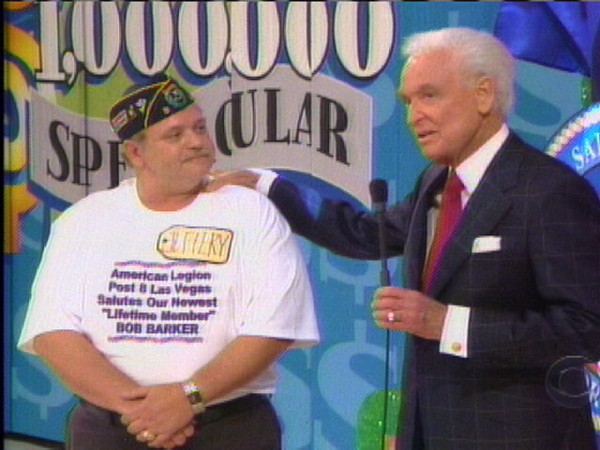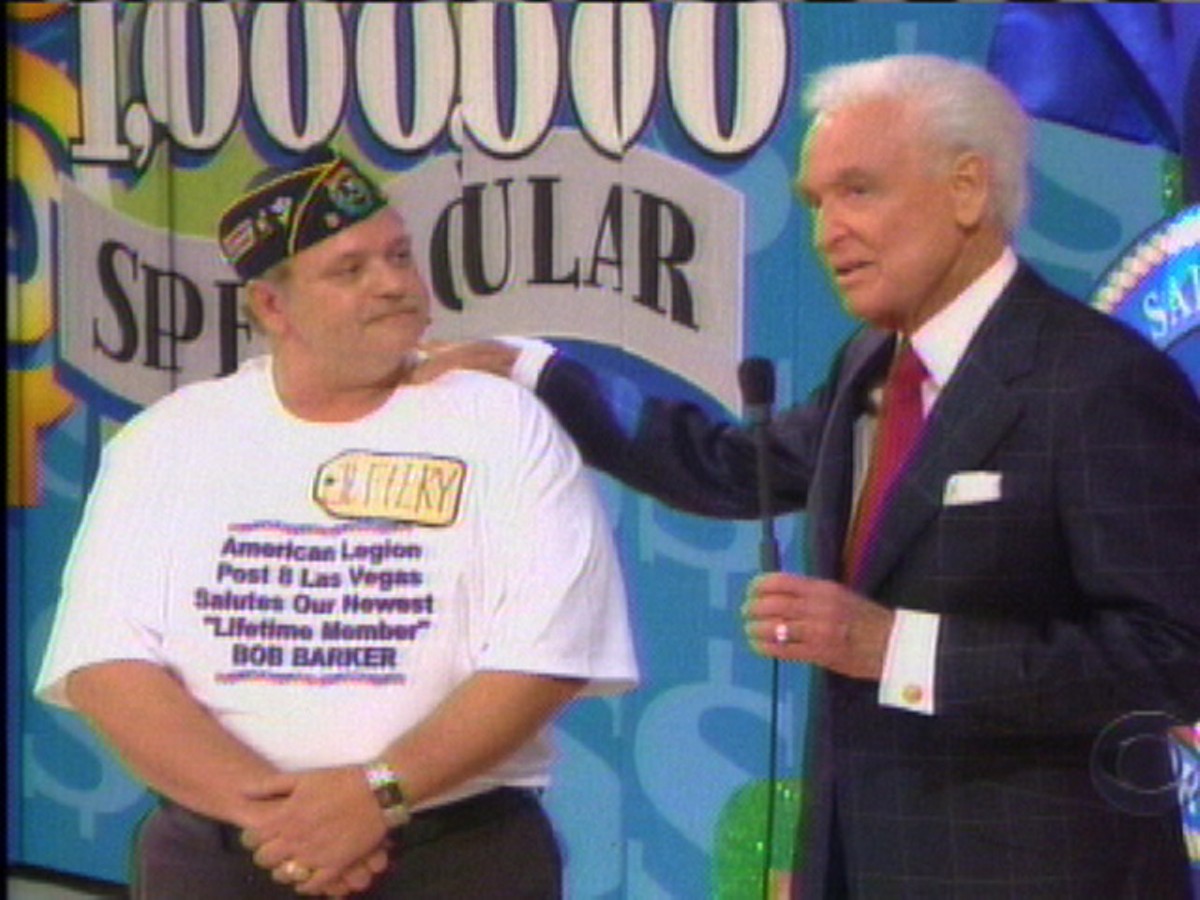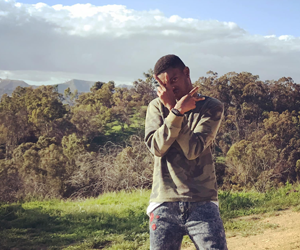Entertainment
Remembering Bob Barker, a Former Missourian Who Kept Us Riveted | Arts Stories & Interviews | St. Louis

[ad_1]

Bob Barker was the pride of Central High School in Springfield, Missouri.
When announcer Johnny Olson belted out, “Come on down! You’re the next contestant on The Price is Right,” I had little interest in the wide-eyed polyestered tourists running down the aisles with their hands over their heads like orangutans, their names on giant price tags pinned to their chests, taking their place on “contestant’s row” and guessing how much a sailboat costs in order to get on stage to win cars and vacations and dinette sets.
No, I tuned in exclusively for Bob Barker, the greatest of all game show hosts. Barker was so great that little kids across the country tuned in whenever possible to watch adults estimate the prices of items at a grocery store, a real-life chore and location that kids would otherwise avoid at all costs. But the monoculture was weird, and there I sat at 11 a.m. all summer long to watch Bob Barker, tanned and elegantly trim in his suits, holding his skinny microphone, letting ecstatic yokels hug him, and sweetly but firmly keeping the games moving.
What was your favorite? I liked 3 Strikes — something about pulling those smooth clackity round numbered discs out of the floppy bag. Or Switcheroo, with the red blocks that Barker would insert into the board. I learned to play poker watching The Price is Right’s Poker Game, in which contestants had to build a hand from the prices of, say, mopeds and cellarette cabinets. Dice Game, too — they had to roll the big red dice over the line in the felt for over/under odds. Or Hole in One, during which the contestant would hold Bob’s mic for him while he (almost always) sank an inspirational putt from the farthest line. Or the Shell Game, in which Barker would manipulate shells the size of construction helmets. Everyone loved Cliffhangers, the show’s most stressful game when the yodeling mountain climber approached step 25, an inch away from tumbling to his death. “Oh, I couldn’t bear to watch!” Barker would say.
Barker was a beacon of patience, even when contestants didn’t spin the big wheel hard enough for it to go all the way around, a firm rule. (The key, of course, was to execute a full to-the-floor power squat during the spin.) I liked the Showcase Showdown least, only because Barker had less interaction with contestants, dominated as the segment was with descriptions of living room sets and four-night stays in London.
Yet I watched on because we all found comfort in Bob Barker—that steady patter, the avuncular smile, the teasing admonishments, the kind laughter, the sorghum-smooth vocal timbre, the graceful improvisational banter, the Jack Benny-style deadpans. He wanted everyone to win and demonstrated grandfatherly sympathy when they didn’t. Nobody threw to commercials like Bob Barker, with a point and an arm swing and a clever segue based on what had just happened on stage when the gal from Flagstaff misjudged the price of a bowling ball on Punch-a-Bunch.
Bob never dweebed out — no corny jokes, no pratfalls, no blaring outcries, no mugging for the camera — which separated him from every host who followed him. I could never get through an episode after he left. And his hair was always a marvel, a shiny lacquered chocolate casque with the most impressive left part in show business.
But then one day in 1987, he suddenly showed up white-headed after swearing off hair dye because the products were tested on animals. “If you don’t like it, I can chant an old Sioux Indian chant and it’ll be dark again,” he joked. (Barker was a member of the Rosebud Sioux Tribe as a kid, growing up on the Rosebud Indian Reservation in South Dakota.)
Yes, Barker loved the barkers. And all other animals. It was another endearing thing about him. He was a vegetarian. He quit hosting Miss USA and Miss Universe in protest of the pageants’ use of fur coats. He paid for one of the ships used to harass Japanese whaling boats, as seen on Whale Wars (it was later renamed the Bob Barker).For many of us, Bob’s daily sign-off about spaying and neutering was the first we’d ever heard of the need for such a thing.
So kids across the country relied on Bob Barker as key company during sick days home from school, but I felt an extra special connection with him as a kid from southwest Missouri. After all, Bob Barker was one of ours. He attended Central High School in Springfield and went on to Drury University where he played basketball for the Panthers. Now and then, a contestant would make it to the stage from Springfield, and Bob would take time to chum it up with a fellow Missourian about Springfield being the “Queen City of the Ozarks” and the county seat of Greene County. I turned red with pride. Or maybe I was blushing over Barker’s Beauties. Perhaps I was supposed to be learning if the price of a set of hair rollers was higher or lower than $38, but I was busy learning deeper lessons courtesy of Janice Pennington, Dian Parkinson and Holly Hallstrom, the three models who not only glided around the set revealing the correct price of items but also revealed a few other things of even more value to me. The Hee Haw girls, those Midwest farmers’ daughters, always made me feel all right, but I wished they all could be Barker’s California girls.
I recall once in high school, my father calling me to insist that I go out and get a job, complaining that I was lying around all summer watching The Price is Right. I countered by telling him that by watching Bob Barker every day, I was picking up smart shopping tips, which offset the need to go out and earn money. Surprisingly, my dad didn’t buy it. He just didn’t realize that you couldn’t hang a price on Bob Barker. Bob was a winner every time.
Help control the animal population. Have your pet spayed or neutered.
Subscribe to Riverfront Times newsletters.Follow us: Apple News | Google News | NewsBreak | Reddit | Instagram | Facebook | Twitter | Or sign up for our RSS Feed
[ad_2]
Source link
Entertainment
Five Fun Facts About Busch Stadium You Didn’t Know

[ad_1]

When baseball fans roll into St. Louis, Busch Stadium often tops their must-see list. But this iconic ballpark has more hidden gems beyond baseball — and even beyond its souvenir shops and good hotdogs. Here’s a lineup of interesting facts that’ll make you the MVP in Busch Stadium trivia.
From Ballpark to Brewing Brand Deal
A 1900 postcard showing the Oyster House of Tony Faust, founder of the brewing firm | Courtesy Anheuser-Busch.
Busch Stadium has a past that’s more refreshing than a cold beer. Before becoming the shrine of Cardinals baseball, it was a multipurpose park called Sportsman”s Park in 1953. Anheuser-Busch, the brewing giant that owned the Cardinals for a time, purchased the stadium and called it Busch Stadium.
Talk about brewing a partnership with a home run!
Museum for Baseball Maniacs
One can explore unique stadium models, step into the broadcast booth to relive Cardinals’ historic moments and hold authentic bats from team legends in this Museum | Courtesy Cardinals Nation
The St. Louis Cardinals Hall of Fame and Museum is an 8,000-square-foot tribute to baseball’s rich history. Opening on the Cardinals’ 2014 Opening Day, this shrine charts the team’s stories from its 1882 beginnings when it was still called the American Association Browns. Here, you can revel in the team’s 11 World Series Championships and 19 pennants. And if you’re feeling adventurous, watch the game from the museum’s roof—the Hoffmann Brothers Rooftop—complete with a full-service bar and an all-you-can-eat menu. It’s like VIP seating, but with more hot dogs.
Even the Fans Break World Records
Busch Stadium is more than a ballpark; it’s a record-breaking arena.
In one memorable event, Nathan’s Famous set a Guinness World Record for the most selfies taken simultaneously—4,296, to be exact. Just imagine trying to squeeze all those selfies into a single frame!
Not to be outdone, Edward Jones and the Alzheimer’s Association formed the largest human image of a brain on the field in 2018. With 1,202 people, the image was like a giant, multi-colored brain freeze.
1,202 people gathered in centerfield at Busch Stadium to form a multi-coloured brain image | Screenshot from Guinness World Records.
The MLB Park in Your Backyard
Are you an avid Cardinals fan, thinking about living near the stadium? The cost of living in the area might be in your favor.
A 2017 study by Estately.com shows that media prices for homes around Busch Stadium is the fourth least expensive among around 26 major MLB stadiums. When San Francisco Giants fans have to pay up $1,197,000 that year for the same convenience of catching a game at a walking distance, Cardinal fans can snag real estate at only $184,900. If that’s not a walk-off win of a deal, we’re not sure what is.
Big Cleats to Fill as Busch Stadium Eyes Expansion
Those wanting to invest in property near Busch Stadium better get it while it’s still affordable. Rumor has it Busch Stadium could soon expand. That rumor has been going around for three decades since talks to raise public money allegedly started. We’ll believe it when we see it.
According to Cardinals owner Bill DeWitt III, plans are likely to mirror recent projects for the Milwaukee Brewers and Baltimore Orioles, with price tags hovering around $500 to $600 million. But the real investment is still up for debates pending a concrete cost-benefit analysis on the stadium’s surrounding area.
So the next time you kick back with a cold beer and catch a game at Busch Stadium, be in awe of the fact there’s more to the place than what meets the batter’s eye. Pitch these interesting facts at trivia night or to your Hinge date who’s new in town. Who knows – you might just win a home run beer.
[ad_2]
Source link
Entertainment
Nashville Police Officer Arrested for Appearing in Adult Video

[ad_1]

A Nashville police officer, Sean Herman, 33, has been arrested and charged with two counts of felony official misconduct after allegedly appearing in an adult video on OnlyFans while on duty. Herman was fired one day after detectives became aware of the video last month.
The video, titled “Can’t believe he didn’t arrest me,” shows Herman, participating in a mock traffic stop while in uniform, groping a woman’s breasts, and grabbing his genitals through his pants. The officer’s face is not visible, but his cruiser, patrol car, and Metro Nashville Police Department patch on his shoulder are clearly visible.
The Metro Nashville Police Department launched an investigation immediately upon discovering the video. The internal investigation determined Herman to be the officer appearing in the video. He was fired on May 9 and arrested on June 14, with a bond set at $3,000.
Subscribe to Riverfront Times newsletters.Follow us: Apple News | Google News | NewsBreak | Reddit | Instagram | Facebook | Twitter | Or sign up for our RSS Feed
[ad_2]
Source link
Entertainment
Jane Smiley’s New Novel, Lucky, Draws on Her Charmed St. Louis Childhood

[ad_1]

Like any good St. Louisan, Jane Smiley has an opinion on the high school question.
“If you ask somebody in St. Louis, ‘Where did you go to high school’ — because each school is so unique, you do get a sense of what their life was like and where they live,” says the John Burroughs graduate. “Where are you from? What do you like? And, you know, the answer is always interesting.”
That’s pretty much what Jodie Rattler, the main character of Smiley’s latest novel, Lucky, thinks.
“School, in St. Louis, is a big question, especially high school,” Rattler muses toward the start of the story. “… My theory about this is not that the person who asks wants to judge you for your socioeconomic position, rather that he or she wants to imagine your neighborhood, since there are so many, and they are all different.”
This parallel thought pattern is even less of a coincidence than the author/subject relationship implies. Lucky, which Alfred A. Knopf published last month, is nominally the story of Jodie, a folk musician gone fairly big who hails from our fair town. But the book is more than just its plot: It’s an ode to St. Louis and an exploration of the life Jane Smiley might have lived — if only a few things were different.
The trail to Lucky started in 2019, when Smiley returned here for her 50th high school reunion and agreed to a local interview. The radio host asked why she’d never set a novel in St. Louis.
“I thought, ‘Boy, why haven’t I done that?'” Smiley remembers. “And so then I thought, ‘Well, maybe I should think about it.’ And I decided since I love music, and St. Louis is a great music town, that I would maybe do an alternative biography of myself if I had been a musician, and of course I would say where she went to [high] school. So that’s what got me started. And the more I got into it, the more I enjoyed it.” click to enlarge DEREK SHAPTON Jane Smiley rocketed to literary stardom after winning the Pulitzer Prize for fiction for A Thousand Acres. She now has more than 25 books to her name.
The Life Jane Smiley Didn’t Live
Jane Smiley has always felt really lucky.
First, there was her background: She grew up with a “very easygoing and fun family.” Growing up in Webster Groves, she enjoyed wandering through the adjacent neighborhoods and exploring how spaces that were so close together could have such different vibes.
Then there was her career, which kicked into gear when she was 42 with the publication of A Thousand Acres, a retelling of King Lear set on a farm in Iowa. It won the National Book Critics Circle Award for fiction in 1991 and the Pulitzer Prize for fiction in 1992. It became a movie and, two years ago, an opera. Since then, she’s been steadily publishing and now has more than 25 books to her name.
“I was lucky in the way that my career got started,” Smiley says. “It was lucky in a way that it continued. I was lucky to win the Pulitzer. And I really enjoyed that. I said, ‘OK, I want to write about someone who’s lucky, but I don’t want it to be me. Because I want to contemplate the idea of luck, and see how maybe it works for somebody else.'”
click to enlarge
Both the book, and Jodie’s good luck, start at Cahokia Downs in 1955. Jodie’s Uncle Drew, a father stand-in, takes her to the racetrack and has her select the numbers on a bet that turns his last $6 into $5,986. She gets $86 of the winnings in a roll of $2 bills.
Smiley, a horse lover throughout her life, used to love looking at the horses at the racetrack before she understood how “corrupt it is at work.” (She also reminisces about pony rides at the corner of Brentwood and Manchester across from St. Mary Magdalen Church and riding her horse at Otis Brown Stables.)
Unlike Smiley, Jodie is not a horse person. And at first, Jodie feels somewhat disconnected from her luck — it’s something other people tell her that she possesses. She’s lucky to live where she does. She’s lucky that her mom doesn’t make her clear her plate, that her uncle has a big house, that she gets into John Burroughs. Later, she begins to carry those bills around as a talisman.
“[I] made a vow never to spend that roll of two-dollar bills — that was where the luck lived,” Jodie thinks after a narrow miss with a tornado.
It’s John Burroughs that changes Jodie’s life, just as it did Smiley’s. But instead of falling in love with books in high school and becoming a writer, Jodie falls into music. She eventually gets into songwriting, penning tunes as a sophomore at Penn State that launch her career.
One of Jodie’s songs should instantly resonate for St. Louis readers.
“The third one was about an accident I heard had happened in St. Louis,” Jodie recalls in the book, “a car going off the bridge over the River des Peres, which may have once been a river but was now a sewer. My challenge was to make sense of the story while sticking in a bunch of odd St. Louis street names — Skinker, of course, DeBaliviere, Bompart, Chouteau, Vandeventer. The chorus was about Big Bend. The song made me cry, but I never sang it to anyone but myself.”
Throughout the book are Jodie’s lyrics, alongside the events that inspire them. Writing them was a new experience for Smiley, who found herself picking up a banjo gifted by an ex and strumming the few songs she’d managed to learn, as well as revisiting the popular music of the novel’s time — the Beatles (George is Smiley’s favorite), Janis Joplin and the Traveling Wilburys, along with Judy Collins, Joan Baez, Joni Mitchell, and Peter, Paul and Mary — basically “all the folk singers.”
“I really love music, and I do wish I’d managed to practice, which I was always a failure at,” Smiley says. “… I liked that they made up their own lyrics, and they made their own music, and I was impressed by that.”
Both Smiley and Jodie grew up in households replete with record players and music. It’s one of their great commonalities.
A great difference between the two? That would be sex. At one point, Jodie compares her body count, which she calls the “Jodie Club,” with a lover — 25 (rounded up, Jodie notes) to his 150.
“That was a lot of fun,” says Smiley. “She learns a lot from having those affairs, and she enjoys it. She’s careful. And I like the fact that she never gets married, and she doesn’t really have any regrets about that.” (Smiley has been married four times.) “In some sense, her musical career has made her want to explore those kinds of issues of love and connection and sex and the way guys are.”
You can tell Smiley had a good time writing this. After Jodie loses her virginity, she thinks, “The erection had turned into a rather cute thing that flopped to one side.”
“Oh, it was fun,” Smiley confirms. “Sometimes I would say, ‘OK, what can I have Jodie do next? What’s something completely different than what I did when I was her age?’ And then I’d have to think about that and try and come up with something that was actually interesting. I knew that she couldn’t do all the things that I had done, and she had to be kind of a different person than I was. And so I made her a little more independent, and a little more determined.”
click to enlarge VIA THE SCHOOL YEARBOOK Jane Smiley’s high school yearbook photo. In Lucky, Jodie recalls of a classmate, “The gawky girl had stuck her head into a basketball basket, taken hold of the rim, and her caption was, ‘They always have the tall girls guard the basket.'”
Lucky follows Jodie from childhood to into her late 60s. At several points in the novel, she crosses paths with a Burroughs classmate, identified only as the “gawky girl.” Jodie takes note of her former classmate, but she’s not recognized.
Toward the end, Jodie walks into Left Bank Books and sees the gawky girl’s name on the cover of a novel.
“Out of curiosity, I read a few things about the gawky girl. Apparently she really had been to Greenland, and the Pulitzer novel was based on King Lear, which I thought was weird, but I did remember that when we read King Lear in senior English, I hadn’t liked it,” Jodie thinks. “… I remembered walking past her in the front hall of the school, maybe a ways down from the front door. She was standing there smiling, her glasses sliding down her nose, and one of the guys in our class, one of the outgoing ones, not one of the math nerds that abounded, stopped and looked at her, and said, ‘You know, I would date you if you weren’t so tall.'”
Sound familiar? Does it help to know Smiley is 6’2″?
The doppelgangers meet face to face after their 50th Burroughs’ reunion at the Fox and Hounds bar at the Cheshire. To go into what happens next — it’s too much of a spoiler.
“In every book, there’s always a surprise,” Smiley says. click to enlarge ZACHARY LINHARES Smiley enjoys St. Louis place names, and DeBaliviere is one of many in the novel.
Jodie Rattler’s St. Louis
Lucky is a smorgasbord of familiar names and places for St. Louis readers, and picking them out will be a big part of the joy of the book for locals.
“I love many things about St. Louis — not exactly the humidity, but lots of other things,” Smiley says. “One of the things I love is how weird the street names are. So I had to put her in that house on Skinker, and I had to refer to a few other places that are kind of weird. I couldn’t fit them all in.
“But I love the way that those street names and St. Louis are a real mix, and some of them are true French street names. Some of them are true English street names. Like Grav-wah or Grav-whoy” — here she deploys first the French and then the St. Louis version of “Gravois” — “whatever you want to call it, and Clark. It’s just really interesting to look around there and sense all of the different cultures that lived there and went through there.”
Jodie grows up in a house on Skinker near Big Bend. It’s “a pale golden color, with the tile roof and the little balcony,” Smiley writes. Jodie walks through Forest Park and eats at Schneithorst’s. Her mother works at the Muny; she shops at Famous Barr. Her grandfather prefers the “golf course near our house on Skinker,” which must be the Forest Park course. Jodie goes to Cardinals games, the Saint Louis Zoo and Grant’s Farm. She visits and thinks about St. Louis’ parks such as Tilles and Babler. Even the county jail in Clayton gets a mention.
Of course, Chuck Berry shows up several times, first mentioned for getting “in trouble for doing something that I wouldn’t understand.” Later, as Jodie drives by his home, she drops some shade on the county along the way: “Aunt Louise knew where Phyllis Schlafly’s house was, so I drove past there — another reason not to choose Ladue,” she writes.
Jodie and the man who invented rock & roll later meet face-to-face briefly at a festival near San Jose, California. “My favorite parts were getting to walk up to Chuck Berry and say, ‘I’m from St. Louis, too. Skinker!’ and having him reply, ‘Cards, baby!’ and know that no one nearby knew what in the world we were talking about,” Jodie recalls.
Lucky feels like a bit of a members-only club, and here the club is St. Louis. There is barely a page that is without some kind of reference — to the point where one might wonder if non-locals can even keep up. (Though they should rest assured: It’s a good read.)
“I write more or less to do what I want to do, and so I wrote about the things that interested me,” Smiley says. And more than 50 years after she graduated high school and left Webster Groves for Iowa and (briefly) Iceland and California, where she lives today, St. Louis, clearly, qualifies.
Subscribe to Riverfront Times newsletters.Follow us: Apple News | Google News | NewsBreak | Reddit | Instagram | Facebook | Twitter | Or sign up for our RSS Feed
[ad_2]
Source link
-

 Politics2 years ago
Politics2 years agoPrenzler ‘reconsidered’ campaign donors, accepts vendor funds
-
Board Bills1 year ago
2024-2025 Board Bill 80 — Prohibiting Street Takeovers
-

 Board Bills3 years ago
Board Bills3 years ago2022-2023 Board Bill 168 — City’s Capital Fund
-

 Business3 years ago
Business3 years agoFields Foods to open new grocery in Pagedale in March
-

 Business3 years ago
Business3 years agoWe Live Here Auténtico! | The Hispanic Chamber | Community and Connection Central
-

 Entertainment2 years ago
Entertainment2 years agoOK, That New Cardinals/Nelly City Connect Collab Is Kind of Great
-

 Entertainment3 years ago
Entertainment3 years agoSt.Louis Man Sounds Just Like Whitley Hewsten, Plans on Performing At The Shayfitz Arena.
-

 Local News2 years ago
Local News2 years agoFox 2 Reporter Tim Ezell Reveals He Has Parkinson’s Disease | St. Louis Metro News | St. Louis





